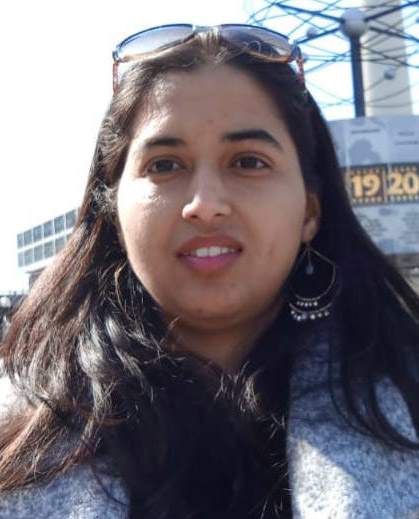Nisha Singh
I have a rich history when it comes to answering the question related to my Ph.D. studies. I joined the Physics department in Indian Institute of Physics, Roorkee (India) in 2014 July, then moved to Max-Planck Institute of Microstructure Physics, Halle-Saale (Germany) in 2016 July and finally completed in November 2019 from Max-Born Institute for nonlinear optics and short pulse spectroscopy, Berlin along with registration at Free University, Berlin. I completed my M.Sc. Physics and B.Sc. (Hons.) Physics from University of Delhi (India).
Expertise and future aspirations:
A complete understanding of a material requires both knowledge of the excited states as well as of the ground state. In particular, the low energy excitations are of utmost importance while studying the electronic, magnetic, dynamical, and thermodynamical properties of the material. Time-dependent density functional theory (TDDFT), within the linear regime, is a successful ab- initio method to assess the electronic charge and spin excitations. However, it requires an approximation to the exchange-correlation (XC) kernel which encapsulates the effect of electron-electron interactions in the many-body system.
In my Ph.D. work I derived and implemented the spin-polarized XC kernel for semilocal approximation, the so-called adiabatic generalized gradient approximation (AGGA) in the Elk code. This kernel has a quadratic dependence on the wave vector q of the perturbation, however the impact of this on the electron energy loss spectra (EELS) is small. It was shown that the AGGA generally worsened the spin-excitation spectra by overestimating the magnon energies and suppressing the intensity of spin waves.
I joined Prof. Laurens Siebbeles OM group in August 2020. Here my primary aim is to study excitons in materials which are promising for solar cells or light emitting diodes. Further the possibility to manipulate these excitons with external laser pulse using real-time TDDFT will be explored on materials of interest.
